Bryan Appleby takes us through the design, build, and trials of a unique truck and camper rig developed, from the ground up, for full-time living off-road, and off-the-grid extreme boondocking.

This article is continued from “Full-Time Truck Campers Must Be Crazy“.
Extreme Boondocking and the TP Factor
by Byran Appleby
After much consideration, I ended up ordering a large hard-side 2009 Lance 1191 truck camper. There were a lot of options to consider, but I ended up deleting more than optioning. I did option the factory installed Onan Generator, two-speed high B.T.U. furnace, and roof-mounted air conditioner.
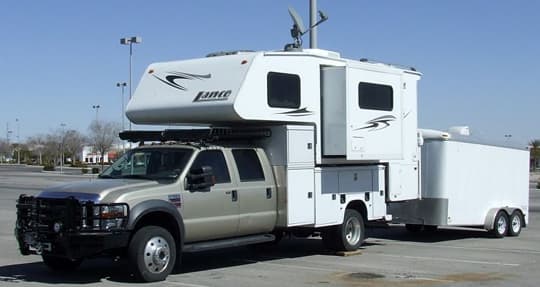
Above: Bryan’s 2009 Lance 1191; a single-slide, dry bath truck camper
I opted out of the factory microwave choosing instead to install my own $30 unit. With my plans to be in remote locations, I knew that Burger King would not be an easy take-out, so I opted for the oven and stove option.
I supplement my indoor cooking with an auxiliary propane grill and separate Weber charcoal grill. This is an example in how users of truck campers vary. Some will prepare meals and bring these for their trip. Others simply eat out for every meal. My routine is more like a backpacker; I need to plan and bring bulk items to prepare and cook.
Picking the right camper is important. For me, I zeroed in on a hard side truck camper with a slide. I love the extra room of a slide-out and can’t wait until I’m in a location I can put out the slide. But, with stealth camping, cold weather, and dust/sand storms, I have learned how important it is to choose a truck camper that can be used with the slide-out(s) in.
While I will always dream of full-time RVing in a short-bed pop-up truck camper and a lifted four-wheel drive truck, the reality is that I made the right choice. As a four season truck camper, I needed a hard-side.
Also, I wanted my truck camper to last for fifteen to twenty years. The abuse of four-wheeling up logging roads and literally scrambling eggs in the fridge was not something I wanted to do. But, getting down dirt and forest roads was a priority. Planning the next part was important, if not critical for my future as a full-time extreme boondocking truck camper.
My first choice was to purchase a new 2008 Ford F-550, 6.4L diesel, 4.30 LSA, 17,950 pound GVWR, crew cab, extended frame truck. I opted for skid plates, a block heater, spare tire and wheel, heavy duty front suspension, the low deflection package, heated seats, and auxiliary fuel reserves. The truck has been impressively problem free, since delivery.
I installed Firestone air bags to level out my truck camper when camping. The Ford F-550 does not come with a hitch from the factory.
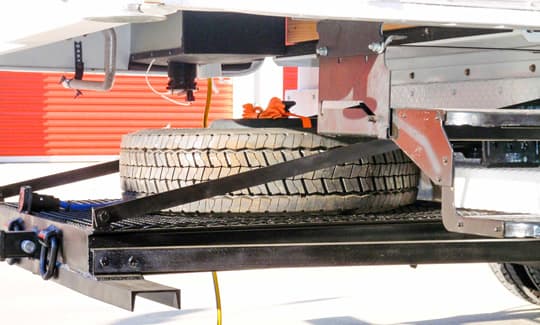
Above: The rear platform for spare tires. The two trailer tires (not pictured) are stacked right on top of the truck spare. The trailer tires fit into the void of the Lance overhang.
The same group that installed my service body, installed my Class VII hitch and rear platform to extend the stinger beyond the rear overhang of my Lance 1191. On this platform are three spare tires for my F-550 and trailer.
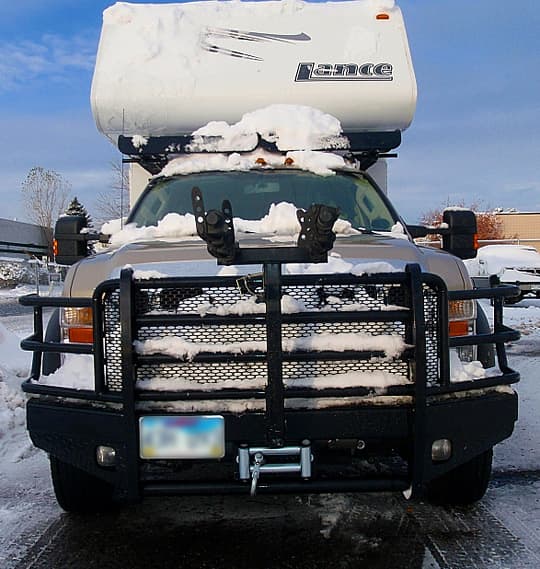
Above: Ranch Hand bumper with winch and front hitch
A Ranch Hand bumper with winch and front hitch option was installed, including a Warn 16.5 winch. I also installed two KC Daylighter II auxiliary lights.
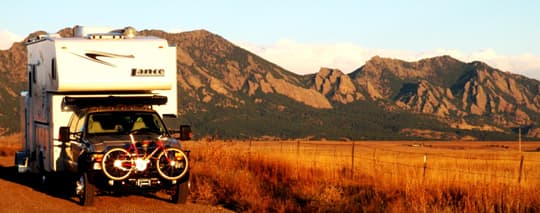
Above: The bike rack on the front bumper receiver hitch
For bikes, I used one of my old Yakima bike hitches and modified it so it would work with the front bumper receiver hitch. The installation lowered the hitch as well, minimizing the height the bikes would ride.
I always felt that a pickup bed was a lot of wasted space, so I chose a Knapheide service body to mount on my cab and chassis 2008 Ford F-550.
There were not a lot of references for full-time RVing with a service bed at the time I began researching in 2004, but I did find someone who part-timed with a custom service bed. Contacting their custom service body manufacturer, I was met with roadblocks. Put simply, they did not want to do another service body for a truck camper. Custom service bodies are very expensive, but turn out really nice.
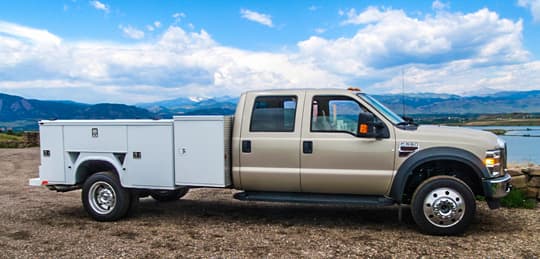
Above: The passenger’s side of the Knapheide service body on Bryan’s Ford F550
During my research, I discovered a service body right out of the Knapheide catalog. It has worked perfectly. I went this direction, saving $8,000 by not going the custom route.
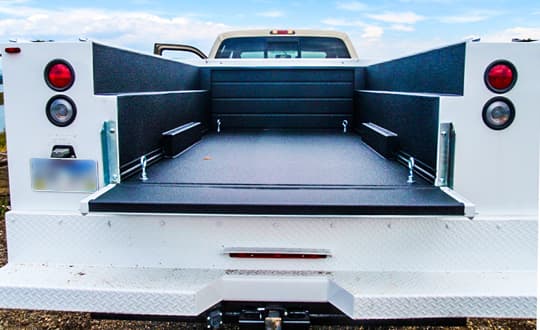
Above: The rear of the Knapheide service body on Bryan’s Ford F550
With my service body, I opted for the full-height (40”) and full-depth (20”) cabinets. With the full-height cabinets, I needed to lift the Lance 1191 nine-inches off the floor of the service body, with a purpose built platform.
Due to an option that I will share later, I opted for a separate cabinet in front of my service body. If I were to do it over again, or recommend a service bed to someone, I would do a complete service body cabinet; back bumper to back wall of the crew cab.
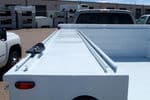 |
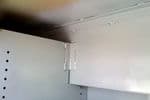 |
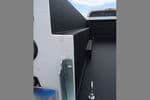 |
Above left: The Unistruts were welded to the top of the cabinets to allow attachment of the camper to the service body, utilizing the tie-down locations on the camper. An additional Unistrut was welded, even though not needed for the camper application.
Above Middle: This photograph shows the inside the service body, depicting the portion that was cut out, flipped over, and welded back in place. Even though it is not seen, Bryan Rhino lined the inside of his service body to protect the surface from damage and friction. This acts as a rubber mat to help keep the camper in place.
Above Right: The notched cabinet allows the camper to fit lower into the service body. The upfitter did all of this work, at no additional cost. The 6”x9” piece was just turned over and welded back into place.
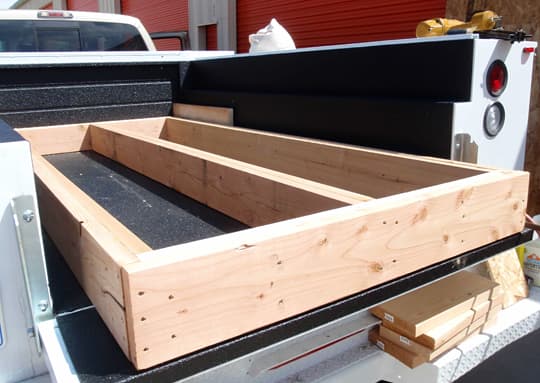
Above: Two seventy gallon potable water belly tanks fit in the platform the camper rests on
To assist my extended boondocking stays in remote locations, two seventy gallon potable water belly tanks were made and installed in the spaces available in the platform the Lance 1191 truck camper rests on.
There are lines connecting these tanks to the Lance factory installed forty-five gallon potable tank. This is in addition to the six-gallon hot water tank in the camper for a combined 191 gallons of fresh water. When full that’s about 1,600 pounds of water.
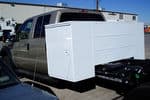 |
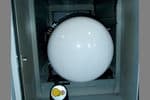 |
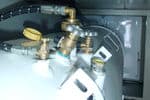 |
Above: Bryan’s 100 gallon propane tank and valves. The propane tank and installation meets DOT requirements
A DOT Certified 100 gallon propane tank was mounted in the service bed. With this option, I am able to minimize my propane refills to one to two times a year. I am also able to drive right up to the propane filling stations and fill. This avoids me needing to climb a ladder, unbolt the propane tanks in the Lance, and haul thirty-pound propane tanks every couple of weeks. The 100 gallons of propane also allows me unlimited stays in remote locations for boondocking.
Knowing what I now know, I would have installed this tank in a full-length service body, rather than its own separate cabinet, as I now have.
I began full-time RVing in June of 2009. At that point, I used the Onan generator built into the Lance exclusively to supplement charging my battery bank. This required running my Onan two to three hours every day to maintain the batteries.
In August of 2011 I added a Honda inverter generator as my main generator, relegating my Onan generator to back-up status.
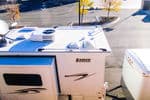 |
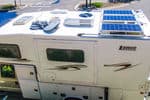 |
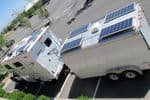 |
Above: Before and after pictures of the rooftops of Bryan’s Lance Camper and Haulmark enclosed trailer
Then in November of 2011 I installed my first phase of solar panels; a 300 watt system. Since then I have added more panels and now have a 900 watt system. An additional group of solar panels will be added before December of 2014 to make up the sun shortfall found in the winter months. At that time I will have a combined, 1,220 watts of solar.
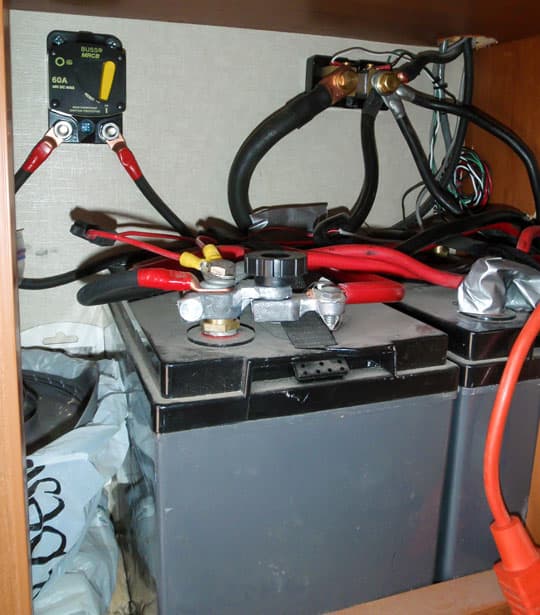
Above: Bryan did an solar and battery evaluation. Then, he installed two sealed AGM batteries in a cabinet including a charge controller and battery monitor shunt.
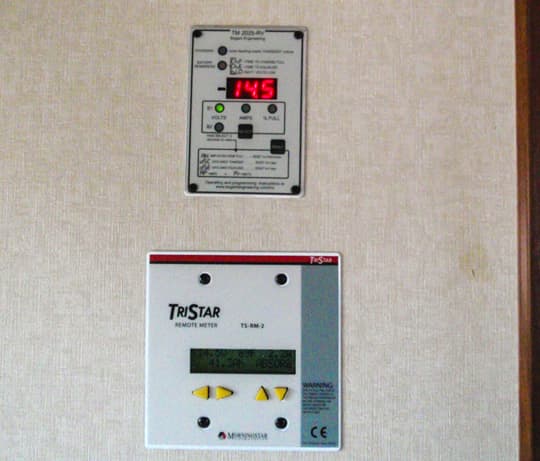
Above: Bryan installed a remote charge controller and battery monitors
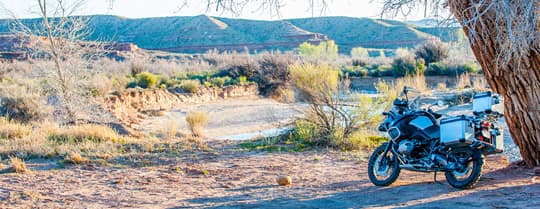
Above: Bryan’s 2012 BMW GS1200R Adventure motorcycle in Coyote Buttes, Vermillion National Monument
For exploring and getting groceries, having a motorcycle was an important part of my adventure from the beginning. There were only two motorcycles I considered. One was a KTM. The other, a BMW. I chose a 2008 BMW GS1200R Adventure. The BMW has performed above and beyond my wildest expectations. It’s the perfect get-around vehicle, except maybe when the roads are icy and the temperatures drop below 0⁰F.
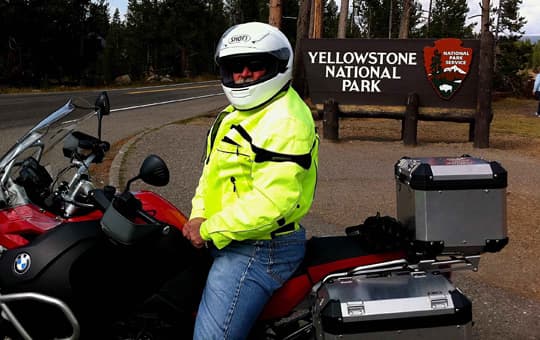
Above: Bryan on his 2008 BMW GS1200R Adventure motorcycle just outside of Yellowstone National Park
My original thoughts were to be able to travel easily down highways, with the motorcycle, in the advent the truck and camper were not viable. I wanted to travel the logging and backroads with ease. Carrying necessary camera equipment, gear and supplies was also important.
Motorcycles might not be a workable solution for all full-time RVers and other means should be considered. Some might choose a Prius or a Jeep. The nice thing to having a four wheel automobile is weather. Unlike a motorcycle, low or high temperatures and after-dark hours will not enter into the planning of excursions with an automobile.
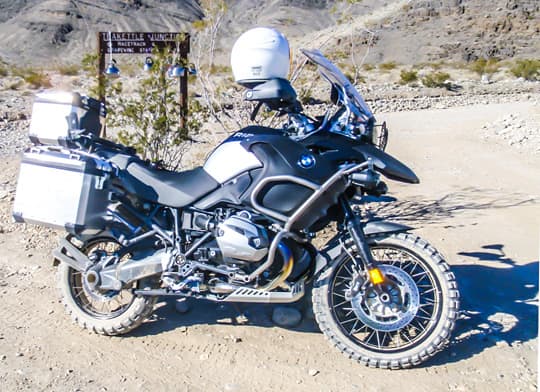
Above: Bryan’s 2012 BMW GS1200R Adventure motorcycle while exploring Teakettle Junction in Death Valley National Park
The really nice thing about having a get-around vehicle is you can stage your truck camper as a base camp and go out and explore. It certainly opens up a new possibilities, as in Death Valley.
Originally, I had planned on fitting a motorcycle platform on the back of my truck and truck camper. After reviewing measurements, I soon found it to be an unworkable solution due to the platform height off the ground. The height would create difficulty when loading and unloading. Furthermore, using a vertical winch or hydraulic lift was not a workable solution due to mechanics and costs. Only a motorcycle trailer met all my requirements.
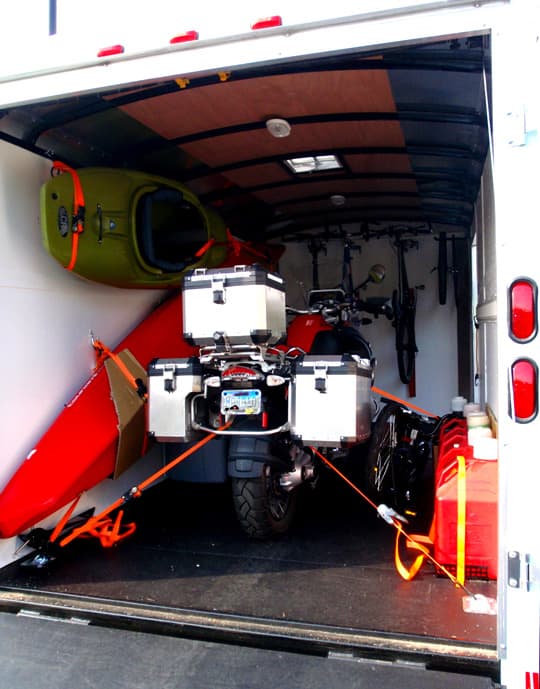
Above: Bryan’s 2008 BMW GS1200R Adventure stored in his cargo trailer. This motorcycle was later destroyed in an accident.
The original plans were not to tow anything behind the truck and camper. Everything becomes a compromise with pulling a trailer and, in turn, not pulling a trailer.
I was originally concerned that having a trailer would limit my accessibility in and out of places. Well, having a trailer has been a great addition and not as much of a limiting factor, as I once thought. The trailer has enabled me to bring additional toys to play with, on the road, including motorcycles, bicycles, kayaks, hockey, and ski gear. I also use the trailer to store grocery items, fuel, and supplies. Finally, the trailer acts as a platform for my second solar panel system.
Yes, “TP Factor” is exactly what you think it means; toilet paper. Toilet paper provides a good word picture for so many important factors in being successful in an extreme boondocking experience.
As many of us know, traveling, exploring and living a wanderer’s life in a truck camper is a wonderful experience. But, because of the innate size and storage capacity of a truck camper, you are met with the “TP Factor.”
How many rolls of toilet paper can you bring before running out and another trip to a town is needed? Then you have the issue of being in remote areas. Does the nearby town have a grocery store? This is the TP Factor; the amount of time you can boondock before your limited supply of water, propane, seasonal clothes,food, and toilet paper runs out.
For me, my challenge was to organize my capabilities to be able to boondock in remote locations for up to two months, or more. I am often out for two month stretches without stopping at a town. Sure, I could hop on the bike and make a supply run, and often do, but wouldn’t it be a wonderful thing to be in a unique location of Utah, Montana, or northwest Texas and stay for a month, or two? Welcome to my world!
It’s all about the TP Factor. How many rolls of toilet paper, paper towels, and cartons of chocolate milk can I take with me? If you are looking at doing some extreme boondocking, look at what your storage capabilities are and what is important for you to bring. Using the backpacker’s rule; “Everything brought in your backpack must have at least two uses, or it is not included.”
With this information you will quickly determine how long you can actually be in remote areas, avoiding supply runs into town.
I thought it might help to share some of the numbers from my last few years of full-time RVing:
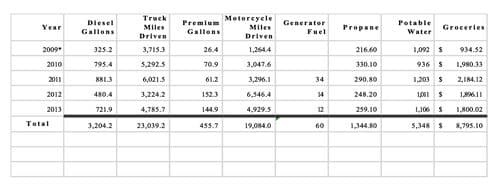
Above: Click to enlarge Bryan’s boondocking expense chart
As with everything, there are some things that do not transfer well, when you live full-time in a truck camper. Some of the things I miss include mail deliveries right to my door, my morning newspaper, long hot showers, my perennial flower beds, and a dishwasher.
Sure, I could stay in a campground, for their hot showers, pick up my mail and newspapers, but that is not something that works for me. You can have your magazines delivered to your mail service, but some will not deliver to a PMB (Private Mail Box center). Even then you will need to pay for the mailing, again, to get them to your eventual location. Luckily electronic versions of many magazines, and newspapers, are now available, as they are at full price at various retail centers.
From mid-February, of 2012, I left Carlsbad, New Mexico for wintering in the Chihuahuan Desert. I left with full stores of groceries and a tank full of diesel.
Two and a half months later, at the end of April, I arrived in El Paso, Texas to fill up my diesel tanks, and resupply with water and food. This was an adventure I have done many times; months of boondocking in the mountains of the Sierras, Rockies, and the deserts of the Sonoran, Chihuahuan, and Mojave. To full-time for not only for weeks, but months, one must have a plan and the right equipment.
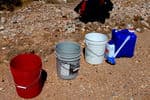 |
 |
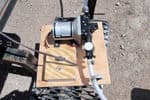 |
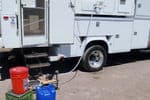 |
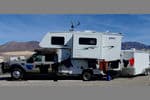 |
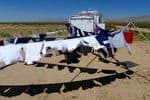 |
Above: With soap, buckets, a plunger, water pump, and clothes lines, Bryan gets his laundry done darn near anywhere
Having a bag to throw dirty clothes into for when you get back home is certainly a great solution, but one can miss out on some wonderful things and places by cashing in and going home. In my opinion, too soon.
Imagine heading across southern Utah and taking two months to cross the desert landscape. Imagine not needing to pack up at the end of the week and head home. That is what I plan for and accomplish. In fact, that is what I am doing right now. While extreme boondocking may not be possible for most truck camping enthusiasts, it might be worth a try.
Recently I was parked in a State Park with a water spigot just out my door. I was taking a brief shower and suddenly realized, “I can take as long of a hot shower as my hot water tank will allow! I have water right out my door and, if I were to hook up a hose, I could actually have it plumbed right into my city water connection.”
Sometimes I get so caught up into conserving everything that I forget I could just live like most RVers and go from campground to campground. Or maybe just stop in one, on occasion, to catch up on laundry, take a hot shower, and go to a movie. Ahhh, to live the life of a regular person…
Maybe I was just born in the wrong century. Queue the painted horse, saddle well worn, bedroll secured, and saddle bags brimming with food stores. Swinging back around in my saddle, looking back toward the small western Kansas town, gloved hand on the pommel, as the town slowly disappears over the hill crest.
Swinging back around and settling into the worn saddle, only the sound of the hooves plod below me, moving through the dusty prairie. Pulling the reins tighter, into my gloved hands, squinting into the remaining light from the now setting sun, I pull the brim of my dirty sweat stained hat down lower, I look over the head and ears of my horse; the horizon beckons and I know, deep inside, there is a new life just over the horizon.
Fade to black…
